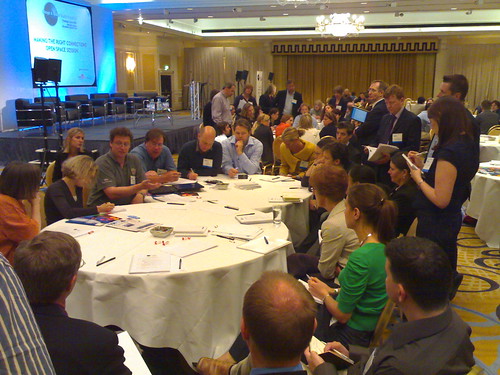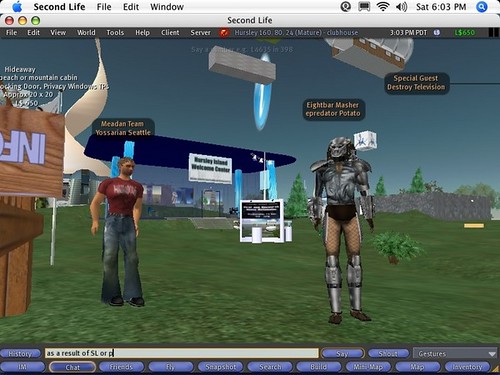I spoke at the Blogs and Social Media Forum yesterday.
The agenda had me slated to join Ben Edwards (publisher of Economist.com), Jem Stone (Executive Producer, BBC New Media and Technology), Adriana Lukas (Big Blog Company) and Myles Runham (General Manager, Europe, Ask.com) for the keynote panel.
Euan Semple, who chaired the event, kicked off the day by getting a feel for the audience by asking how many of the participants a.) read blogs, b.) write blogs, c.) use wikipedia and d.) have edited wikipedia. A surprising number of people said yes in all categories. Indeed, it seemed to me that the percentage of the attendees blogging was slightly higher than the percentage of the keynote panelists blogging publicly; Although Ben Edwards said he wants to start, the fact he doesn’t already have one surprises me enormously given his previous role as director of New Media Communications in IBM’s HQ at Armonk. Equally surprising is the fact that Myles Runham (who previously worked “…in BBC Corporate Strategy (focusing on new media)” also doesn’t seem to have a public blog either.
I think I was subconsciously quoting either Suw Charman or Euan himself when I said that a corporation is made not of employees, but of people.
After some case studies from the Economist and BUPA and a quick speed networking event, we were treated to an open space session facilitated by Lloyd Davis. Lloyd invited anyone who was interested in hosting a conversation to stand up, introduce themselves and share what they wanted to talk about. A dozen subjects were covered, including mobile applications of social media, moderation, spam and (of course) virtual worlds. Yes, the Ian and Roo show was there in full force, attracting a couple of tablefuls of people which opened up into a detailed Q&A and discussion about the virtual worlds.
[CC-licensed photo from Robin Hamman]
Great fun, and an unexpected chance to share in more detail with some very untested (and of course interesting) people.
Sadly we had to dash off during lunch to a meeting across town, so we missed the afternoon sessions. I hate leaving conferences early, and it was only because I was invited to join the conference (replacing another speaker who had dropped out) at the last minute that my afternoon was already full up. It meant we missed Lee Bryant (Headshift) and Simon Phipps (Sun’s Chief Open Source Officer) present, plus a couple of really interesting looking panels too. I am hoping we get the recordings of the afternoon sessions soon, so I can catch up with the end of a great conference.
Update: due to the frankly stunning level of spam it generates, I’ve disabled comments on this individual post. Email me if you have something you want to add.







